Rhus typhina
A common shrub with red wine-colored fruit clusters
Rhus typhina staghorn sumac
Add to MyPlants View Locations
This species of North American native tree belongs to the cashew family. It has been cultivated as an ornamental around the world where there are temperate climates. This species can grow as a small deciduous tree or shrub up to 16 feet tall. It has alternating pinnately compound leaves that can be 10-22 inches long, each with 9-31 toothed leaflets. It is called the staghorn sumac because the twigs and branches are covered with fine hairs that resemble the velvet coating on the antlers of deer as they emerge.
The flowers bloom from May to July depending on location. Male and female flowers are produced on different plants. The flower clusters are large and conical and point upwards from the branches. They may be up to one foot long. The flowers are greenish yellow in color, and individually are only about ¼ inch wide. Female flower clusters are tighter and more conical than the more spreading and large male flower clusters. This is the least colorful stage of the plant’s annual growth, and are often missed by wildflower observers.
The cluster of hairy drupes that forms from June to September is a wine red color, and much easier to see, even from the road. This fruit has been known to stay on the tree all winter. The fruit of the sumac can be collected, soaked in cold water, strained and sweetened to make a lemonade-like drink. Wine can also be made from the berries. Natural black ink, dye, or a mordant to help set other dyes can be made from all parts of the plant except the roots.
The plant spreads either by seed or forms colonies from underground rhizomes. It can be quite aggressive in its ability to spread. It can grow in a variety of poor soils where other species have difficulty surviving. Humans have actually helped the spread of this tree by creating more disturbed ground.
The foliage turns brilliant shades of red, orange and yellow in autumn, bringing a lot of color to the forest edge. A number of bird and mammal species eat the fruit or leaves. The wide-spreading roots make it ideal for stabilizing soil along stream banks and other similar places.
This species is safe for humans to handle. The plant called poison sumac can cause a rash similar to poison ivy. Poison sumac is primarily a plant of swamp, bog and marshlands and is not closely related to the staghorn sumac in spite of the similar common name. A related and also harmless species is smooth sumac that has a similar appearance but is less hairy.
Habitat & Range
Common along forest edges, in meadows and fields & other man-disturbed habitats.
Present throughout the state.
Range: Grows in southeastern Canada, northeastern and Midwestern United States and further south in the Appalachian Mountains.
Wetland code: Not classified
Phenology
Flowers late May to July.
Fruits June to September or later.
Plant Codes
S-rank: S5 (Secure)
G-rank: G5 (Secure)
Rhus typhina staghorn sumac
Synonyms: Rhus hirtaAdd to MyPlants View Locations
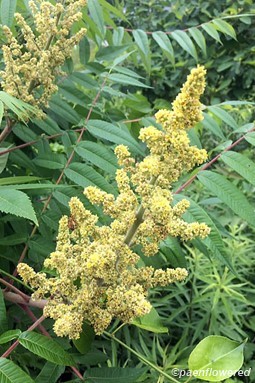
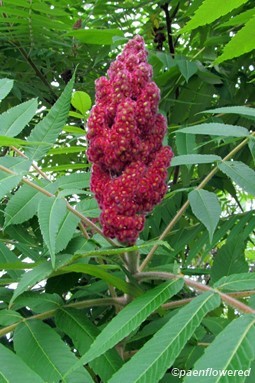
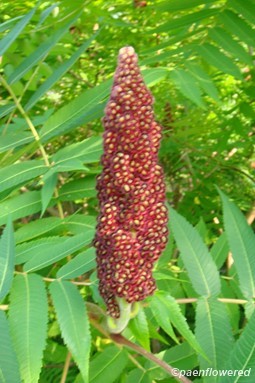
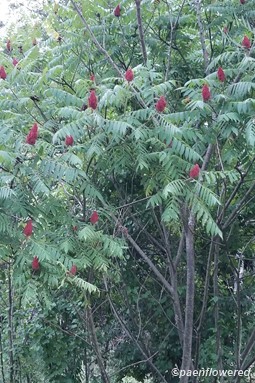
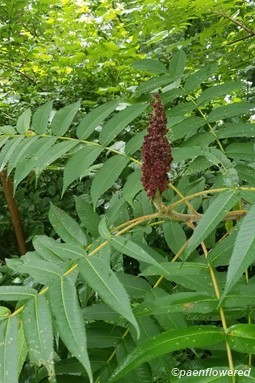
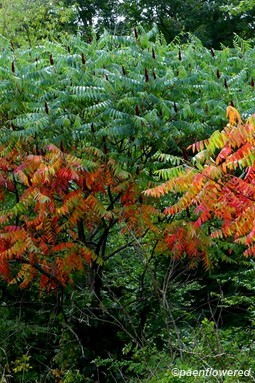


.jpg?v=638047535920000000)



Comments
Have you spotted this plant in your area? We'd love to hear about your experience! Share your comments or questions about the plant below. Comments are moderated before posting.